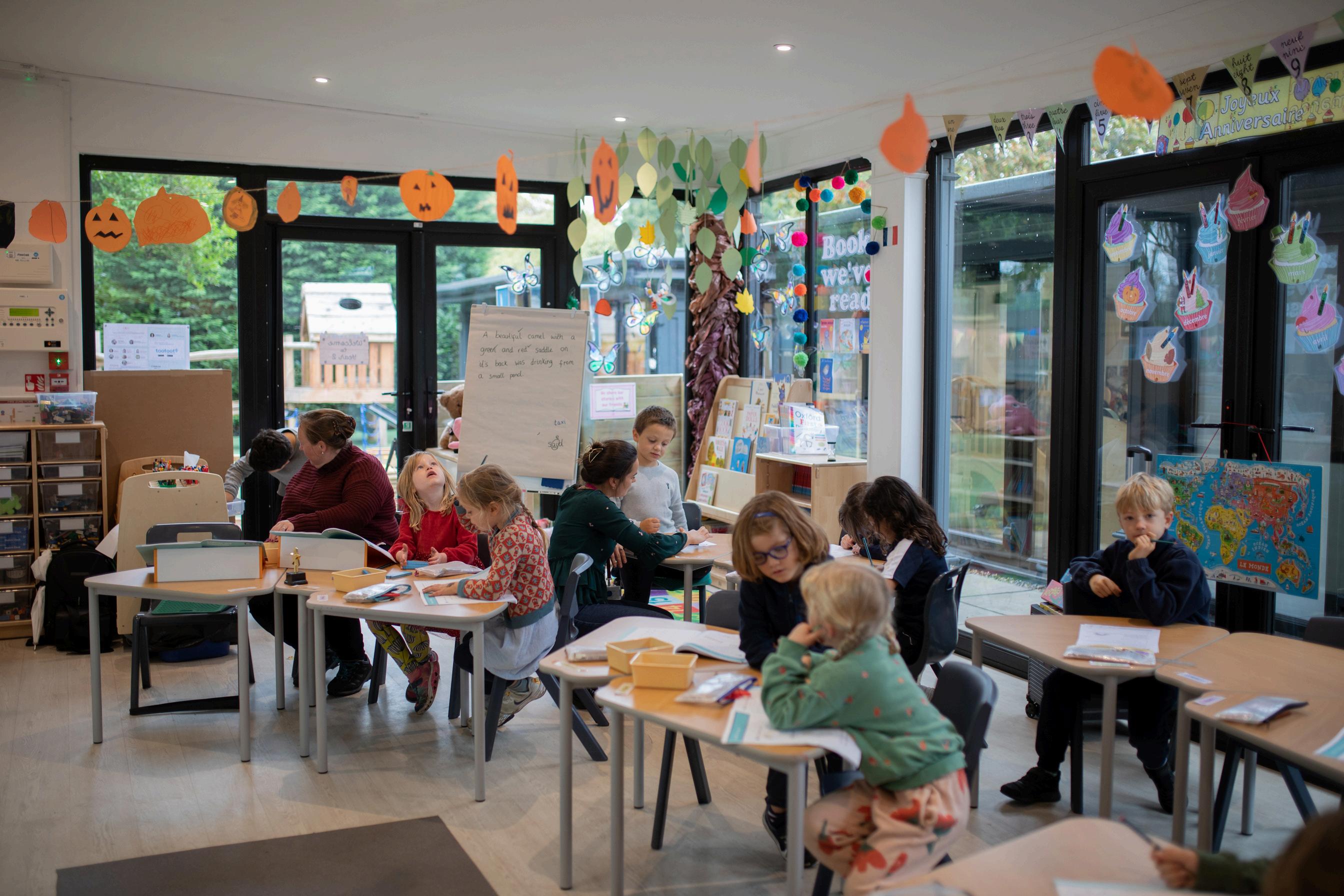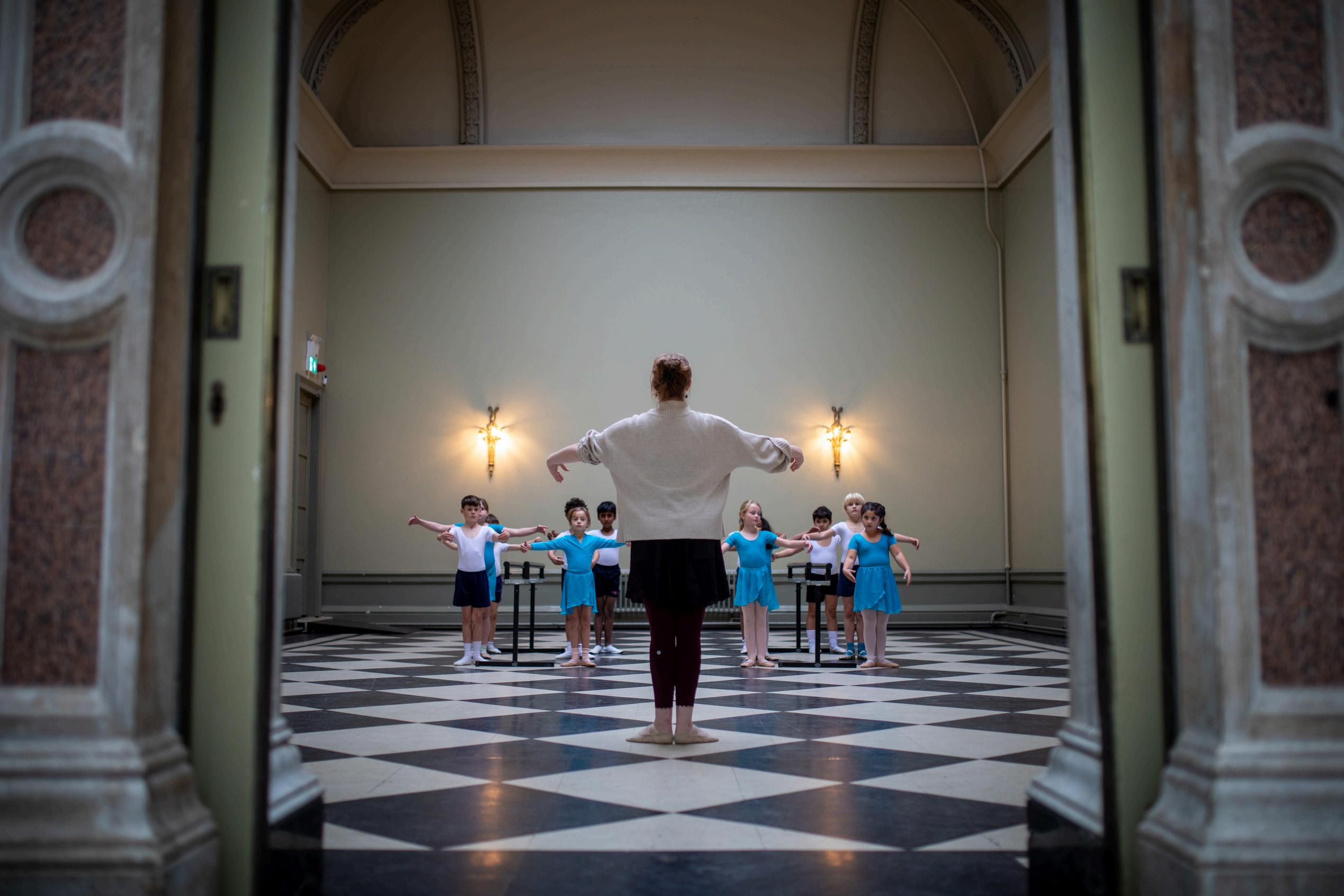Teaching and Curriculum at Hampton Court House
Key contacts
Year 2 students will identify the changes that autumn brings to our surroundings, in particular the differences we can observe in trees Studying the work of artists such as Gustav Klimt, Henri Rousseau and Andy Goldsworthy, pupils will make observations about the methods used to depict various landscapes. Pupils will be introduced to the medium of acrylic paint and will develop their drawing skills and colour theory to create various artworks in response to the artist studies
Autumn 1
Autumn 2
Spring 1
Spring 2
Summer 1
Summer 2
What are we studying?
Trees: Making art in response to ‘The Tree of Life’, by Gustav Klimt and ‘Surprised! (or Tiger in a Tropical Storm)’, by Henri Rousseau Focusing on pattern, shape, symbolism, collage and drawing skills
Trees continued: Making art in response to the art of Andy Goldsworthy and Piet Mondrian Focusing on temporary art, sculpture, tonal values, pattern and introduction to acrylic paint
Ernest Shackleton: Pupils will read William Grill’s telling of Ernest Shackleton’s expedition to cross the Antarctic, making art in response to the illustrations in the book Building upon drawing skills by looking at new techniques and approaches, introducing mixed media
Superheroes: Working on a large-scale collaborative piece, pupils will study the drawings of James Gulliver Hancock and create a cityscape in which to place various superheroes, villains and villainous inventions
Clay: Birds Looking at the bird studies of Matt Sewell and John James Audubon, students will learn watercolour techniques to paint different birds Pupils will each make and decorate a clay bird to be fired in the kiln, revisiting pinch pot techniques and expanding on skills with clay modelling and building techniques
Sewing project: Taking inspiration from textile designer Donna Wilson, pupils will design and stitch a soft toy This project aims to develop fine motor skills and revisits mastery of a basic running stitch
Découverte du Monde (Discovering the World)
DDM is split into discrete subjects in order to cover a wide range of knowledge across humanities and sciences. Whilst it is an interlinked curriculum, we ensure that the essential foundation of knowledge needed for the later years of prep in each subject and senior are covered.
History
In Year 2 this term, we will explore the chronological order of significant historical events. We will look at the significance of events behind living history - focus on Remembrance Day. We will also discover the Royal family, understand that generations succeed one another starting at George I. We will also discover Versailles and Louis XIV. Throughout Black History Month we will learn about key events in our mutual history and how nationalities, civilisations and people are connected.
Geography
We will identify and name the continents and oceans, recognise the cardinal points and situate ourselves on maps and globes according to the equator. We will locate countries on a map, recognise their flags, capital cities and important facts about them. We will also learn about the United Countries and its countries.
Science
We will explore different materials like glass, plastic, metal, wood, paper, brick, and rock, and describe their properties using vocabulary such as stretchy, stiff, hard, soft, shiny, dull, bendy, inflexible, rough, smooth, absorbent, unabsorbent, waterproof, and permeable. Through hands-on activities and discussions, we will deepen our understanding of these concepts and develop scientific inquiry skills.
Forest School
2 Curriculum Overview
Forest school is the part of our prep curriculum built entirely around outdoor learning At HCH we have the advantage of excellent grounds that we take full advantage of Throughout Year 1 and Year 2 children develop their confidence, self-esteem and risk-taking skills further through a variety of purposeful and adult led activities in Forest School Children will develop a wide range of skills that are cultivated in an outdoor environment, such as bush craft skills, curiosity and care of the natural environment Our curriculum links to Science, Art and Geography And considers the wellbeing of every child as we go through the curriculum We will start the year covering being safe around a fire We will then lead to exploring the natural environment focusing on the changes that they see during seasons
Term
Autumn 1
Autumn 2
Spring 1
Spring 2
Summer 1
What are we studying?
Safety in the natural environment and taking safe and supervised risks
Observing the changes in weather and in the natural environment for Autumn and Winter
Celebrate Autumn Harvest and Christmas
Building dens and using tools safely
Celebrate Chinese New Year and harvest from community garden to cook a Chinese meal on the open fire
Celebrate National Birdwatching and make bird feeders for winter birds
Fairytales and stories that link to play in the natural environment
Celebrate National Wildlife Day
Observing new changes in the natural environment coming into Spring and planting
Celebrate World Bee Day
Summer 2 Minibeasts, map making and treasure seeking
A u t u m n c o n t e n t
Y e a r s u m m a r y
Francophone Culture
Our aim is to continue to explore the francophone world, whilst also remember and celebration culture in France, by marking some of the big celebrations and festivals of the year.
In year 2, in the Autumn term, the children are learning about another country where French is spoken: Belgium. From recognising the country’s flag and capital city to finding out about the main monuments to visit in Brussels, the children have also been introduced to 5 main cities and their architecture as well as traditional Belgian food and drink. Year 2 have also found out about a couple of famous Belgian cartoonists and have learned about the traditions of Christmas in Belgium. It’s been wonderful to see the children’s engagement and enjoyment in learning about French culture.
In the first half term the pupils will learn about:
Count to 100, identify number, estimate
Place value in 2-digit numbers
Make and write amounts of money
Make amounts of money; give change
Addition/subtraction facts; missing nos
Know how many to next multiple of 10
Add and subtract 10/20; extend to 11/21
Use facts to add several numbers
Add/subtract numbers bridging 10
Understand multiplication as sets
Understand doubles/halves to 20
In the second half term the pupils will learn about:
Measure lengths in metric units; rulers
Measure weights in g and kg
Measure capacities in litres
Understand hours, minutes, seconds
Tell the time; introduce 5-min intervals
Add/subtract using facts and place value
Use facts/patterns to add/subtract
Add/subtract multiples of 10
Add/subtract 11, 12, 21, 22, etc
Add/subtract near multiples of 10
Add pairs of 2-digit numbers
Left, right, clockwise, anti-clockwise turns
Draw and describe 2-D shapes & polygons
Sort shapes: Venn and Carroll diagrams
Tally charts, block graphs and pictograms
3-D shapes; identify edges, faces, vertices
How it will be assessed:
Termly online assessments are completed by the pupils to demonstrate their depth of understanding of the mathematical topics that they have been studying In addition, informal oral assessment takes place in lessons throughout the term to consolidate and assess depth of understanding
Term
Autumn 1
Place Value and Money
Addition and Subtraction Multiplication and Division
Autumn 2 Measures
Addition & Subtraction
Shape and Data
Place Value and Fractions
What are we studying?
Spring 1
Addition and Subtraction Multiplication and Division
Spring 2 Time Multiplication and Division
Summer 1
Summer 2
Number, Fractions, Money Calculation Strategies
Puzzles and Problems
More calculation: Ready for Y3?
Organised physical activity is vital to child development, both in terms of strength and growth cognitive, motivational and social skills The Year 2 children will focus on the core skills of two invasion games, football and netball In football, the children will be taught how to perform the core skills to play the game This will include passing, shooting, dribbling, agility and small sided conditioned games In netball, they will learn the fundamental skills of catching, throwing and movement Students will be taught the basic positions, how to shoot and the different types of passes they can use in competitive game situations.
Term
Autumn
Spring
Summer
What are we studying?
Football: Passing, shooting, dribbling, conditioned games.
Netball: Passing, shooting, attack vs defence, positions and conditioned games
Gymnastics: balances, body shapes, travel, jumps and rolls
Games: balance, coordination, agility, throwing and catching.
Cricket: throwing, catching, batting, bowling and fielding
Athletics: sack race, long jump, javelin throw, obstacle race, relay, 60m sprint.
Performing Arts
At Hampton Court House, we believe that the performing arts are integral to our school community. Therefore, are curriculum is built around students actively participating in various performances throughout the year. We are committed to offering inclusive opportunities that allow every student to showcase their talents.
In our lessons, to prepare for these performances students will focus on developing spatial awareness, musicality, vocal, physical, and character skills to enhance their performance abilities. They will learn stage craft and understand how to engage an audience.
Additionally, we place a strong emphasis on collaborative and creative skills, which are essential for every child's growth. Our classes incorporate engaging games and activities designed to foster teamwork, improve peer interaction, and develop the ability to follow directions. Students are encouraged to contribute creative suggestions through music, movement, and dialogue, ensuring a well-rounded arts education at Hampton Court House.
We begin the year by preparing for our Christmas show, Year 2 students will focus on developing their ballet skills, alongside incorporating singing into their performance.
In Year 2, Drama will be taught in French, enhancing language skills through theatrical expression. By the Easter term, students will have the opportunity to showcase their talents in a dedicated showcase event.
Throughout the year, there will also be numerous recitals and concerts, providing students with platforms to display their musical abilities and talents.
PSHE (Personal, Social, Health and Economic Education)














